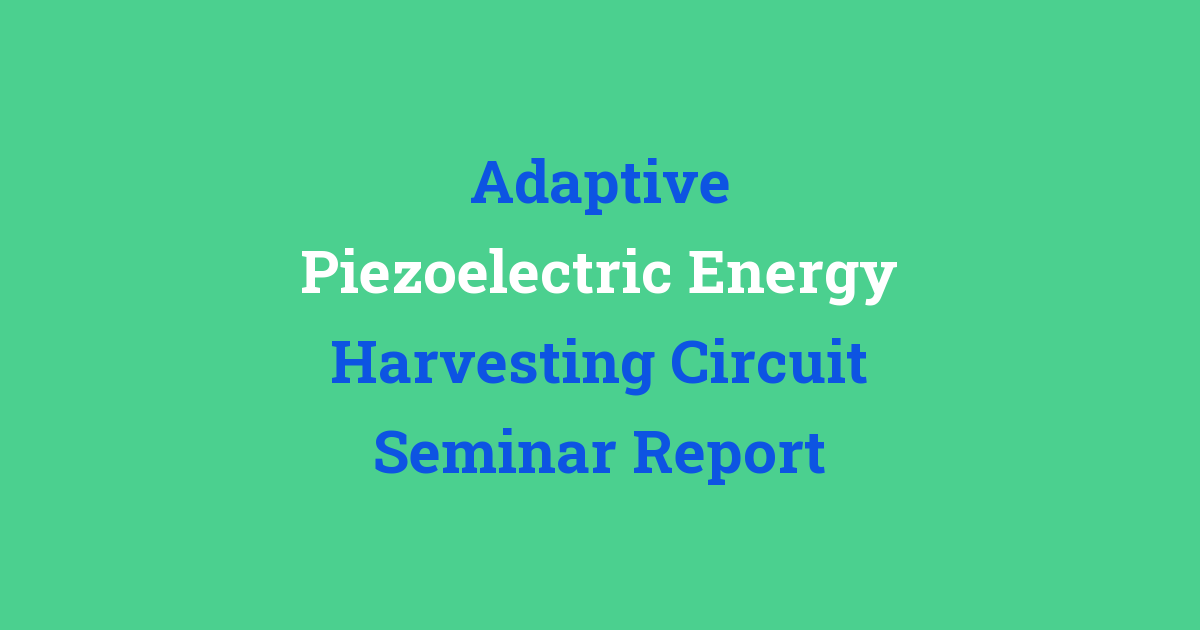Seminar report on adaptive piezoelectric energy harvesting circuit technology.
Introduction
The field of energy harvesting has gained significant attention in recent years due to the increasing demand for sustainable energy sources. Piezoelectric energy harvesting is a promising technology that converts mechanical energy into electrical energy using piezoelectric materials. This seminar report focuses on the development of an adaptive piezoelectric energy harvesting circuit that can efficiently harvest energy from ambient vibrations.
Problem Statement
The existing piezoelectric energy harvesting circuits often face challenges in optimizing energy conversion efficiency. They are designed to operate optimally at a specific frequency, which limits their performance in environments with varying vibration frequencies. Additionally, these circuits lack adaptability and fail to effectively harvest energy under changing conditions.
Existing System
The existing piezoelectric energy harvesting circuits utilize passive voltage rectifiers and energy storage elements to convert and store harvested energy. These circuits are typically designed with fixed electrical parameters, such as resonance frequency and load impedance, which restrict their ability to adapt to dynamic environmental conditions. As a result, the energy harvesting efficiency of these circuits is limited, especially in real-world applications with unpredictable vibration patterns.
Disadvantages
- Lack of adaptability to varying vibration frequencies
- Low energy harvesting efficiency under dynamic conditions
- Limited performance in real-world applications
Proposed System
The proposed adaptive piezoelectric energy harvesting circuit aims to address the limitations of the existing systems by incorporating adaptive control algorithms and flexible electrical parameters. By dynamically adjusting the circuit parameters based on the input vibration frequency and amplitude, the proposed system can optimize energy harvesting efficiency in variable environments. The adaptive control mechanism enables the circuit to self-tune for maximum power output under changing conditions, making it suitable for a wide range of applications.
Advantages
- Adaptability to varying vibration frequencies
- Improved energy harvesting efficiency under dynamic conditions
- Enhanced performance in real-world applications
- Self-tuning capability for maximum power output
Features
- Adaptive control algorithm for dynamic parameter adjustment
- Flexible electrical parameters for optimal energy harvesting
- Self-tuning mechanism for maximizing power output
- Compatibility with a wide range of vibration frequencies
Conclusion
In conclusion, the development of an adaptive piezoelectric energy harvesting circuit represents a significant advancement in the field of energy harvesting technology. By incorporating adaptive control algorithms and flexible electrical parameters, the proposed system offers improved energy harvesting efficiency and adaptability to changing environmental conditions. The self-tuning capability ensures optimal power output under varying vibration frequencies, making it a promising solution for sustainable energy harvesting applications.

